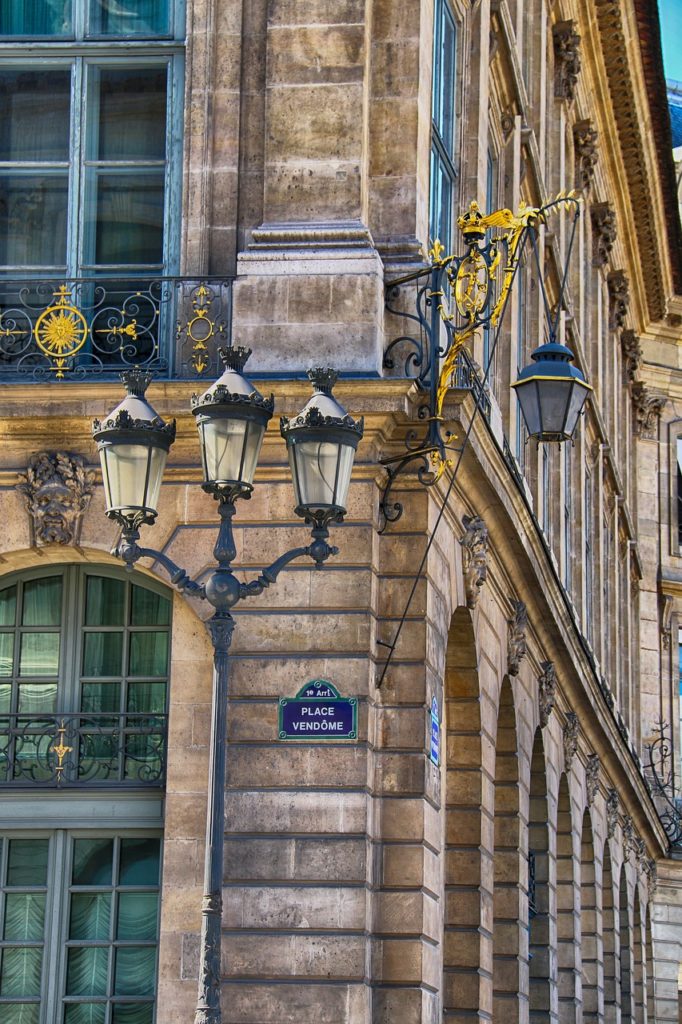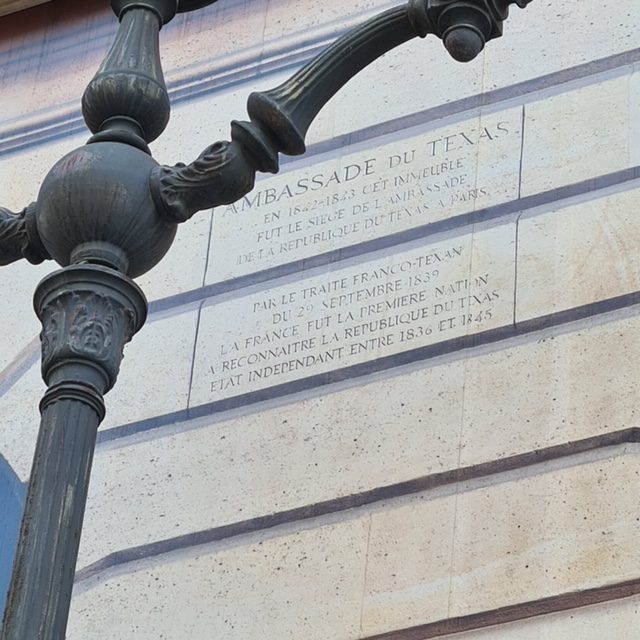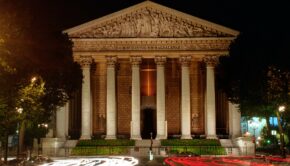History of the Embassy of Texas in Paris in the Prestigious Place Vendôme
Embassy of Texas
1, place vendôme
75002 Paris
Header Photo Credit: Falkenpost by Pixabay

You can’t make this up: Texas has maintained an embassy in Paris, in one of the most prestigious places in the capital, the Place Vendôme. Before any historical comments, let’s just say that it wasn’t a bad idea to settle at 1, place Vendôme. The location put the representative of Texas within a stone’s throw of the center of French power: the Palais des Tuileries which, since the French Revolution, had replaced Versailles. The Place Vendôme is located halfway between this palace and the Place de la Concorde.
The main door of the building, in which the Texas ambassador settled, doesn’t face the Place Vendôme, although it bears the number 1. It’s located on a street which, after Rue du Faubourg Saint Honoré, becomes Rue de Castiglione and ends up at the corner of Rue de Rivoli and the Jardin des Tuileries. A very fine example of the elegant construction of the 18th century, this hotel, known as the Hôtel de Francès, was built on land purchased by the famous financier John Law (who caused one of the first large-scale banking crashes known to the French as the Law bankruptcy) in 1718. Built in 1723 for Pierre Perrin, secretary to the king, it became in 1788 the seat of a state administration and then, from 1858, has been occupied by a high-end hotel, the Hotel Vendôme.

The Texas Embassy was thus very well located in one of the most beautiful areas of Paris. Its presence is still remembered by a few words engraved on the pediment of the Hotel.
Time now for a little history lesson, because this embassy, after all, seems very strange. No other state in the United States has had an embassy in Paris. The only American embassy was the United States Embassy. The building has been described, and it was also recalled that it was thanks to this embassy that the Place des Etats-Unis in the 16th arrondissement received its name.
Really weird, this Texas embassy business! A prankster gone too far: installed at the number 1 of the Place Vendôme he would have put a false business card at the entrance and would have thus deceived the public? Is it a mistake of the French administration?
The truth lies elsewhere: the Texas Embassy, located in Paris, Place Vendôme is neither a joke nor a fake. The Embassy did exist. And we owe it to explain its origins.
It goes back to a time when the United States didn’t cross the continent. A time when the conquerors of yesterday in Latin America, the Spanish and Portuguese, had given in to the young states that had become Empires. A time when North America had become the open field for European migrations. The new frontier was beginning to take shape. Texas was one of those territories where the old and the new would clash.

It all began in 1835 with the “Texan Revolution.” In November 1835, representatives of the various Texas colonies gathered and set up a provisional government. They appointed Samuel Houston to lead a war for independence. You know where this led. Mexican General Santa Anna launched a punitive expedition that ended at the Alamo. The final confrontation between Mexicans and Texans took place on April 21, 1836 at the Battle of San Jacinto. The Texas army (about 900 men), under the command of Sam Houston, defeated the Mexican army. The Treaties of Velasco, signed on May 14, 1836, established the independence of Texas, which became a full-fledged state officially recognized by the U.S. government in March 1837 (but not by the Mexican government). Samuel Houston became the first president of the Republic of Texas.
In 1839, the first nation to recognize Texas, France signed a treaty with the young state. The latter established an embassy in Paris in 1842 until 1845.
In 1837, American President Andrew Jackson appointed Alcée Louis la Branche*, a Louisiana member of the House of Representatives, to represent the United States in Texas. In 1839, in France, King Louis-Philippe appointed the diplomat Jean Pierre Isidore Alphonse Dubois de Saligny**, head of the French legation in Houston.
The Texan “solo” was interrupted in 1845 when Texas joined the United States and became the twenty-eighth state in the Union. For the Mexicans, this was an annexation and therefore an aggression. It became the pretext for the American-Mexican war which lasted from 1846 to 1848.
As for 1 Place Vendôme, which became the Vendôme Hotel, it is currently (April 2021) undergoing major renovation work..
*Alcée Louis la Branche: https://www.tshaonline.org/handbook/entries/la-branche-alcee-louis
**Jean Pierre Isidore Alphonse Dubois de Saligny: https://www.tshaonline.org/handbook/entries/dubois-de-saligny
This article was translated in English by Marie Pireddu.





















Fantastic read! This article does an excellent job of breaking down what smart homes are and how they’re transforming modern…